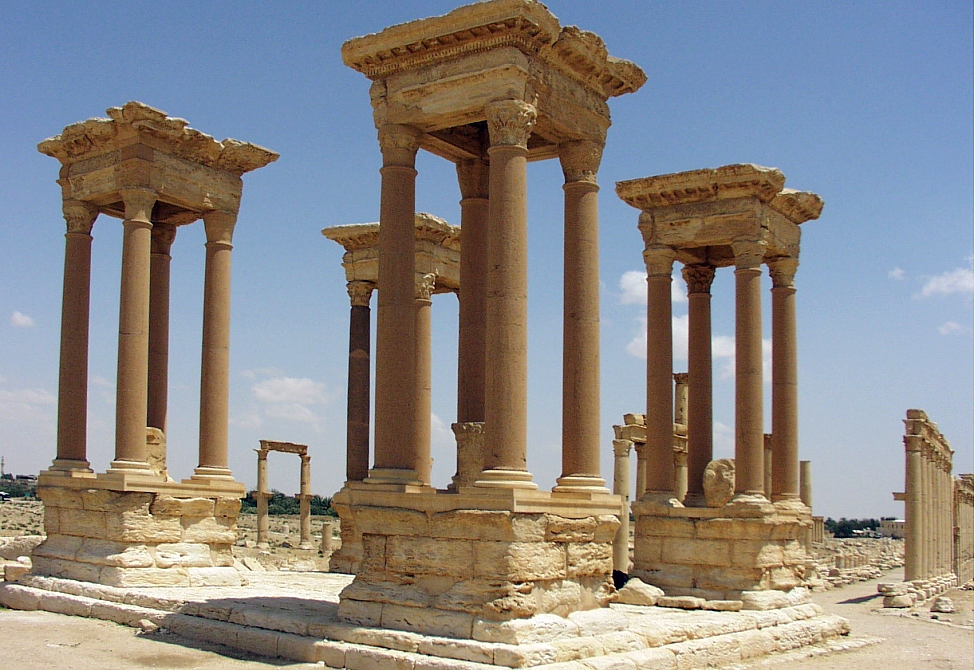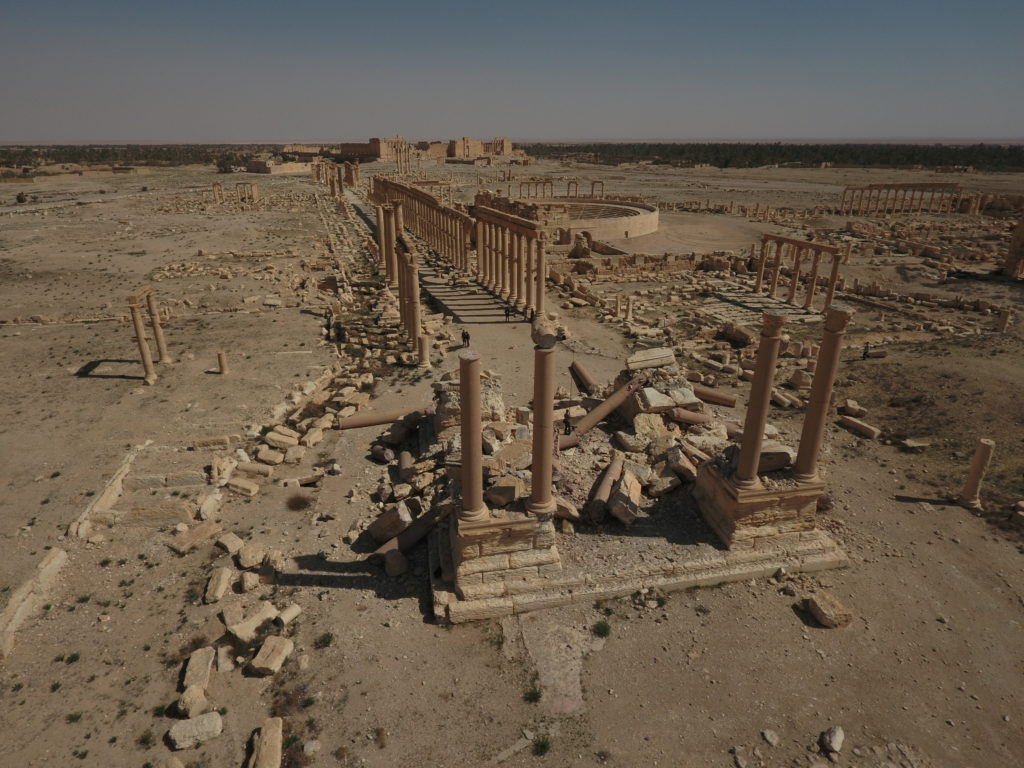Virtual reality, or VR, has quickly become a mainstay for exhibiting arts and cultural organizations. When looking at it as a concept, “VR has the potential to simulate imaginative and existing physical environments along with their processes. The simulations can be tuned to a highest level of multisensorial realism in order to affect users’ visual, auditory, tactile, vestibular, and even olfactory and gustatory senses.” But what is it to museums and cultural organizations, and how can it help the arts? There are several museums based entirely around VR, including the entirely virtual Museum of Other Realities. Google Arts & Culture has their own database of world sites, Open Heritage, which takes advantage of aspects of VR, allowing users to see the sites in 3D view. While the ethics of virtual reality are often debated, cultural heritage specialists have found a special place for it in regards to site recreations, many of which are at the risk of destruction in real life.
Open Heritage is just one of several online-available recreations of cultural heritage sites. It presents 26 different sites as realistic, explorable 3D locations, including locations in “parts of the Roman city of Pompeii, Native American cliff dwellings at Mesa Verde in southern Colorado, and the 1000 year old Temple of Kukulcan in the Mayan city of Chichén Itzá.” These sites, unlike some others, look at how they look now, compared to how they may have looked when they were being actively used. Along with Google’s Open Heritage service, several other institutions have toyed with their own versions of VR recreations, including TIME and National Geographic. TIME’s work, which was actually a preview for a film by British director Christopher Nolan, used VR to transport the user into the Battle of Dunkirk during the second World War. National Geographic’s immersive virtual reality experiment looks into Viking culture, placing the user in the middle of a Viking “fighting pit”. While these two examples are action-packed, VR is also being used by arts and cultural organizations for more observational purposes, such as the aforementioned site recreations. Australian archaeologist, Simon Young, for example, created a VR recreation of several different Roman ruin sites. The VR experience allows visitors at these Roman ruins to look through their VR and see what the site once looked like centuries back. Young’s recreation can be accessed via smartphone and plugged into a portable smartphone VR headset.
These smartphone VR headsets, and other recently popularized VR headsets, have changed the means of accessibility towards VR, making it much easier for cultural institutions to find and use immersive reality experiences in “educational, explorative, and exhibition enhancement purposes.” Virtual reality is a rapidly changing and growing technology, but the creation of these portable headsets has laid a baseline for museums and other institutions to use and work off of. According to an article by Erik Champion and Mafkereseb Kassahun Bekele, what actually engages the user “is related to the ability of the virtual environment to enable engaging experiences as a result of the combination of immersivity and intuitive interaction with the cultural context in the virtual environment.” The relevant cultural context and immersivity of VR in this application is what enhances the learning experience for the user, and for the most part has been able to be made accessible to museums that otherwise would not have any representation of these sites or their artifacts.
The use of VR recreations for cultural heritage sites has become crucial in preserving public memory, with many being at risk of destruction. One main concern for preservationists is the destruction of war in countries such as Ukraine, Iraq, and Syria, and the loss being inflicted when it comes to the existence of heritage sites in these regions. In a statement made by Michael Danti of the Syrian Heritage Initiative at the American Schools of Oriental Research, he described the destruction of war as “the worst cultural heritage emergency since World War II…here we see how technologies can be used not only to document the making – and unmaking – of heritage, but also to rebuild it; both materially and in the imagination.” In Syria, specifically, the Islamic State “has sped the pace of looting by encouraging professional looters with heavy machinery and archeological knowledge to dig archeological sites in return for payment to [the Islamic State] of a 20% ‘tax’ on the value of what they find.” Not only does this looting bring them profit, so in turn they encourage the destruction, but it also serves as a violent reminder that there is no alternative in their world. This is where the creation of virtual realities surrounding these heritage sites is growing in importance.
As of 2016, virtual reality and cultural specialists have been working together to recreate these sites to preserve their existence in time after their destruction at the hands of militant groups. The Institute of Digital Archaeology, a joint project between Oxford, Harvard, and the Museum of the Future (Dubai) created a 3D virtual model of a Roman arch destroyed by the Islamic State in Palmyra, Syria. The recreation was based on photos from archaeologists and tourists alike before the site’s destruction, and after it’s initial translation into a VR experience was able to be carved into marble by robots programmed based on the model. Something that is also important to note with this technology, however, as highlighted by artist Morehshin Allahyari in Legal and Ethical Considerations for Digital Recreations of Cultural Heritage by Erin L. Thompson, is that we must consider power structures and “how it’s different when Westerners or tech companies save cultural things compared to someone else who actually comes from the culture.” Sites and antiquities that are recognized within these countries, but perhaps not the greater Western culture are subject to neglect in these projects. This is just one of several ethical considerations when using these technologies to recreate cultural heritage sites.

In Legal and Ethical Considerations for Digital Recreations of Cultural Heritage, Thompson highlights further considerations similar to Allahyari, including “the political uses of representation and interpretation of cultural heritage; the accessibility or lack thereof of digital representations; the violence to the ‘authentic’ or ‘real’ that the virtual might inflict; the correct approach to data transparency and sharing; and the ease both of manipulation and surreptitious capture of digital images.” Concerns also often include political exploitation of the sites, that these VR experiences will be built by engineers that have had little interaction or no real connection with the physical sites themselves, and that they will overall be modeled after Westernized perspectives. These heritage sites, as well as their antiquities, “are not protectable by copyright; at thousands of years old, they are in the public domain many times over,” giving almost anyone that wants permission to form a recreation without the necessary thought to history, detail, and cultural consent.

Source: ArtNet.com
Virtual reality recreations, as an artistic response to these cultural heritage destructions, serves as an important tool moving forward for many nations and their unique cultures. These recreations “stand as symbolic representations of a society’s existence and have paid the price over the eons,” with many of these projects being created out of pure necessity of saving public memory of these sites that could soon be lost forever. While the creation of these VR experiences are at risk of numerous ethical considerations, including the perspective, political view, and accessibility, the correct intention and balanced collaboration can complete VR cultural heritage recreation projects that are relevant and non-exploitative. With the use of best practices, such as clearly marking VR experiences based on who made it versus presenting it as a completely neutral representation, and to provide annotations to the viewer within the experience that educated them on conflicting theories or aspects of the representation that may differ. Allowing viewers to make their own informed decisions based on these annotations could certainly be a solution for these experiences when being presented by organizations that are not necessarily deeply connected to these heritage sites. Overall, these uses of the medium with historical preservation as a driving factor are an important aspect of virtual reality creation that should not be overlooked despite the ethical considerations, with many of these concerns being able to be addressed if the works are to go to larger public audiences. With meaningful collaboration around the project, VR professionals and historians alike can build an experience that is adequately true and reflective of its home culture.